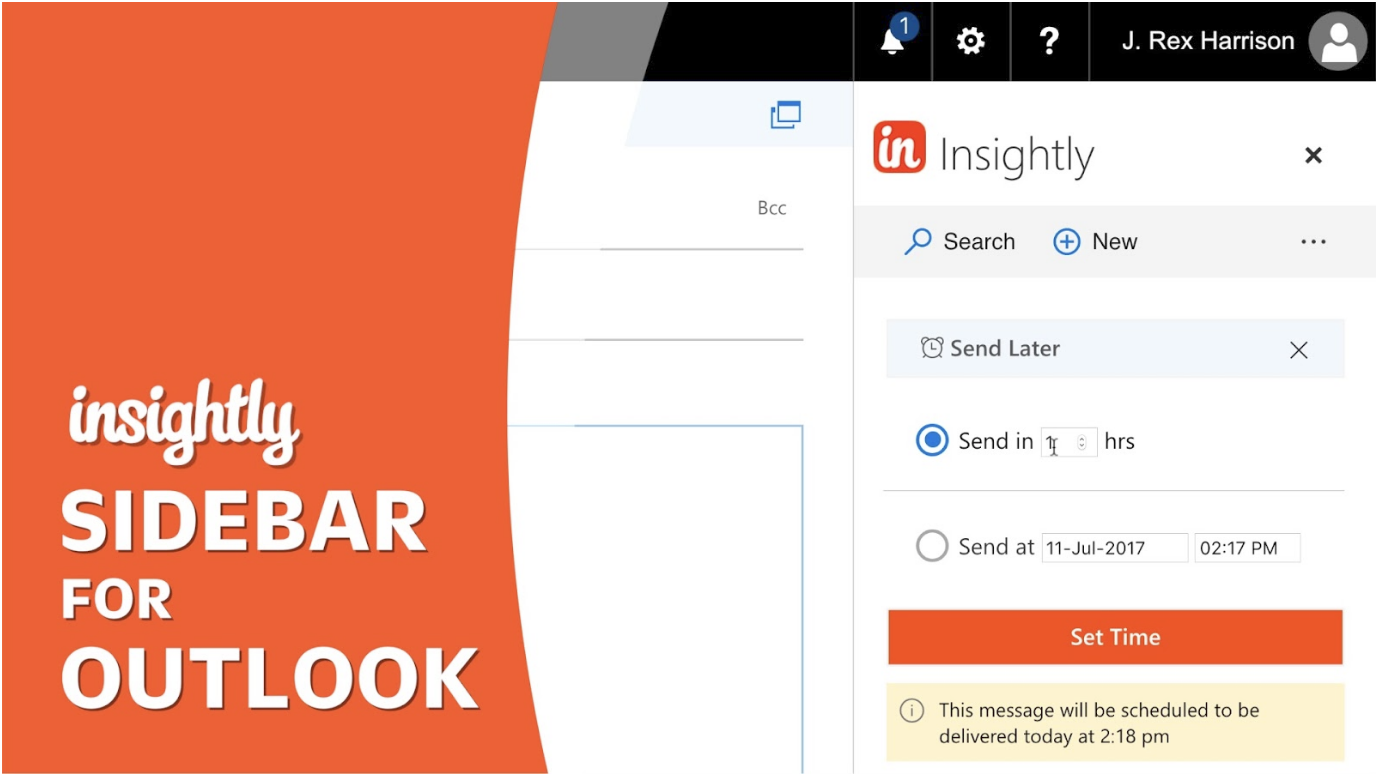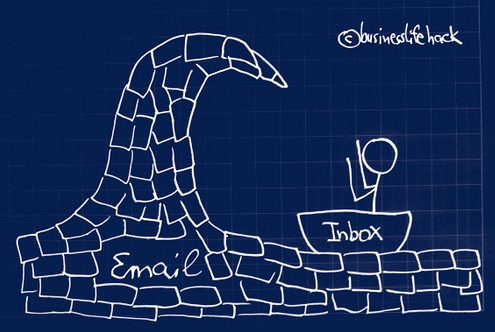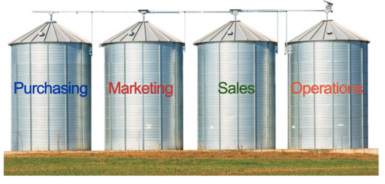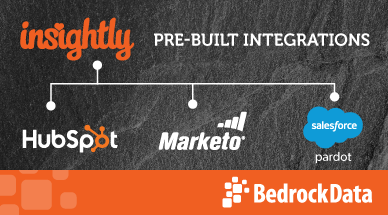Have you ever tried using the Insightly audio notes feature?
If not, you’re definitely missing out. Insightly allows you to record up to 60 minutes of audio per file. Voice notes can be linked to contacts, organizations, leads, opportunities, and projects. Best of all, free and paid users alike can access this feature.
So, what are some ways to use audio notes? Here are ten ideas to consider.
1. Recapping Sales Appointments
The best sales reps are usually very busy people. With client meetings from sunrise to sunset, there’s rarely a down moment. It’s therefore difficult (if not impossible) for your sales team to type summary reports for each completed appointment.
A more feasible approach could involve the use of audio notes. After finishing a sales call, the rep can easily locate the lead or opportunity record (via the Insightly mobile CRM app). Within seconds, he could be recording a brief explanation of how things went. Once saved, someone from your back office could then listen to the recording and update the record (such as changing the pipeline status).
A task that would otherwise take days to get completed (or never get done at all), could be done within minutes. Most importantly, your organization has the information it needs – and, your sales reps can get back to what they do best: selling.
2. Training Your Sales Reps
Good sales help is hard to find. And, more frustratingly, the really good ones are even harder to keep. (The competition is always happy to pay more!)
Before your top sales talent jumps ship, it might be wise to capture their best practices into audio format. In doing so, you’ll create a more scalable onboarding and training workflow for new sales hires.
What types of audio files could be beneficial? In a perfect world, new team members would probably appreciate a selection of recorded:
- Cold calls
- Follow-ups with stale opportunities
- Upselling examples
- Conversations with unhappy customers
- Follow-ups with satisfied customers
- Testimonial solicitations
Before you turn your star performers loose to create such recordings, be sure to review best practices for recording phone conversations. (You may need to ask clients for permission before recording such conversations, or you could use role play to achieve the same outcome.)
To what type of Insightly record should your sales team attach such audio notes? One option involves creating a never-ending project called “sales training.” As new team members are onboarded, add them to the project and assign new tasks, inviting them to review the recordings.
3. Outlining Blog Posts
Your content marketing always seems to take a back seat to more pressing matters. The moment you sit down to write a blog post, there’s always some new emergency that requires your attention. Despite your best intentions, there’s just rarely an hour in your week to focus on writing.
Audio notes can help you move one step closer toward your next published article. Simply pull out your smartphone, find your “content marketing” project in Insightly, and start dictating. Don’t get too worried about grammar or being concise. Just focus on collecting your ideas. (After all, you’re the subject matter expert.) You can have one of your staff members transcribe and edit the piece later on.
As you use Insightly to capture more of your blog ideas, you may find it helpful to follow a specific dictation pattern. For example, you might start by clearly stating the objective of the post. Once stated, you could then pause the recording until your first supporting point comes to mind. (Sometimes staring at a ticking timer is enough to give you writer’s block!) Repeat this process until you’ve fully developed your thoughts.
4. Interviewing Clients for Case Studies
Recent industry surveys have shown that customers trust online reviews as much (if not more) than word-of-mouth referrals. This is an astounding statistic, and it’s one that your business should be capitalizing on. The development of case studies for your website is one effective method for doing so.
Case studies don’t just fall from the sky. In fact, well-done case studies require substantial effort to produce. Interviewing clients, drafting content, and gaining final approval are just a few of the steps involved.
Luckily, Insightly voice notes can serve an invaluable role in this process. Rather than facilitating the client interview and manually keying in notes, Insightly can do the heavy lifting for you. Just jump into the client’s record and start recording. Your client will likely be impressed by how tech-savvy you are, and you can stay focused on asking the right questions.
Once you return to your desk, you’ll see the audio file in your activity feed. What a great feeling to know that you’ll never misquote another client!
5. Capturing New Product or Service Ideas
Great ideas can come during the strangest moments. For whatever reason, the grocery store checkout line seems to be a particularly fertile source of your ideas. Unfortunately, you rarely have a writing utensil on hand, and your phone’s notepad is a notorious black hole.
Instead, you might try creating a “new ideas” project in Insightly. When genius strikes, you’re then just a tap away from fleshing out an explanatory voice note. You can also customize the naming of your audio notes, making it easier to locate ideas in the future.
For added accountability, you could then assign yourself a date-sensitive task (with an email reminder). You’ll not only have an in-depth explanation of the new idea (in your own words), but you’ll more importantly have a deadline by which you must take action.
After reviewing your original idea and determining it has merit, you might choose to create a new project specifically for implementation. Choose between milestones or pipelines, based on the nature of the idea.
And to think….all of this started with a bag of avocados, a conveyer belt, and a store clerk named Jake.
6. Delegating to Your Team
You know what your team should be doing. If only they’d just do it!
The sad reality is that some instructions get murky when translated from your brain into text format. Just because you’ve assigned a task, it doesn’t mean that your staff will actually understand it.
For projects that are especially important, adding a voice note can help to reduce confusion and increase the quality of work. So, when should you take the added effort to include an audio delegation? Here are some possibilities:
You Need Proof of What You Said: Tired of playing the blame game with staff? Leave no room for error by adding a verbal narrative of what should be done. It’s hard for your team to point fingers when they have access to you in your own words.
Only You Know How to Do Something: There are some things that others in your organization can’t possibly know. (For example, your motivation for starting the business.) Sure, you could type up an email or document with this information. But, that takes time – time that you don’t have. A voice file is a much more efficient way to provide clarity.
You’re Tired of Repeating Yourself: Saying the same things over and over? Say it once in a recording, attach it to a project, and point future questions to this resource.
7. Increasing Engagement During Meetings
“Who is going to volunteer to take minutes at today’s staff meeting?” The room goes silent, until one brave soul hesitantly offers to do the work.
If you’ve ever been put into this situation, you know how difficult it is to take notes and participate in the discussion. You want to share your opinion, but you also want to avoid being the scapegoat for bad recordkeeping.
The next time you’re called on, consider harnessing the power of voice notes. Simply launch a related project or other record and start the recording process. As long as the meeting last less than an hour, you can rest easy knowing that Insightly has your back.
And, if your team is expecting a set of typed meeting minutes, you can just download the recording and transcribe it into document format. (If you’re too busy, simply assign the task to your administrative assistant.) Once transcribed, the typed minutes can be attached as a file to any contact, organization, opportunity, or project.
By providing both audio and typed meeting minutes, you’re sure to impress your colleagues!
8. Handing Things Off
In today’s virtual work ecosystem, aligning schedules and time zones can be challenging. Your team in the Philippines is usually gone for the day before your West Coast staff arrives. This situation forces your West Coast team to waste hours simply determining what has been accomplished.
Audio notes can create a seamless interaction between different teams. Instead of only relying on written updates, an audible summary of the day’s work can expedite the handoff from one worker to the next. (It might be wise to develop a standard naming structure for audio notes, including the day’s date or project number.)
And, unlike shared documents, which are easily overwritten and edited, an electronic archive of voice recordings (in the worker’s voice) creates an additional layer of accountability. If it’s later determined that a major oversight has been made, reviewing prior recordings can help your team identify where things went wrong.
9. Celebrating a Job Well Done
Your team works hard to close new deals. They work even harder to build positive, long-term client relationships. Although bonuses and merit increases are greatly appreciated, sometimes a kind word from management goes even further.
You’ve been known to go out of your way to show your appreciation. Many times, this comes in the form of a brief email. Other times, you’ve shown gratitude during company-wide meetings. Recording an Insightly audio note can be another effective way to show people you care.
Unlike an email (which usually lacks personality) or a shout-out in a meeting (which expires immediately after spoken), a voice recording can be a lasting source of motivation for your team. In addition to being front and center in Insightly, users can also download a copy to their computers. It’s the gift that keeps on giving!
10. Blowing Off Steam
You have a lot on your mind. Keeping customers happy, employees on track, and your business profitable can create significant stress in your life. You need an outlet to decompress. Insightly’s audio notes can serve as one way to blow off steam.
(Obviously, you’re probably not going to want others to access your innermost thoughts. It’s therefore wise to set up a private project, visible only to you, for collecting these types of voice notes.)
So, what are some situations that might necessitate the creation of an audio note? Here are a few possibilities:
Something is Troubling You: Customers can say nasty things. Employees can fail on the job. When problems occur, getting them off your chest quickly can help you move on to more important responsibilities (without completely forgetting about them).
Something Needs Research: A colleague from another company shares a sticky situation that you hope to avoid yourself. Get it into Insightly as a note and figure out what to do about it later.
Something is Broken: Things break. Some require immediate attention, but others don’t. (For example, you can’t figure out why your printer keeps printing everything in blue ink!) Make a note for yourself to solve the problem later – instead of wasting time on it now.
Use Your Voice to Get More Done
Most people can talk a lot faster than they can type. Thanks to Insightly audio notes, you can increase your productivity simply by speaking. No more searching through your computer’s folders or smartphone’s text files for the next million-dollar idea. Everything is intuitively organized within Insightly from the get-go – in your own words.
If you’ve never tried this powerful feature before, it’s time you did so. In time, you’re sure to think of many new and creative ways to put your voice to work!

Matt Keener is a marketing consultant and President of Keener Marketing Solutions, LLC. Matt specializes in content marketing and strategic planning, having helped numerous Saas (software as a service) companies and other small businesses worldwide. Read more of Matt’s work, get his book, or connect on LinkedIn.












































